
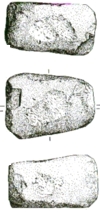
One of the many challenges we faced was to find a way of smelting the more complex and problematical copper ore of chalcopyrite (copper iron sulphide).
The mines in Wales and elsewhere may have been producing chalcopyrite from the end of the 3rd millennium BC, but there is very little archaeological evidence to show us how they smelted it.
Simple furnace pits have been found within the Beaker mining camp at Ross Island Mine in Killarney, Eire (O’Brien, 2004), and a reconstruction of one of these was attempted using it both for roasting and smelting the sulphide ore.
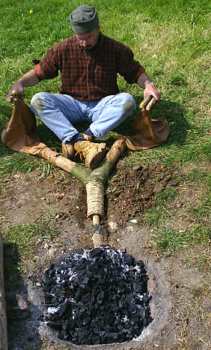
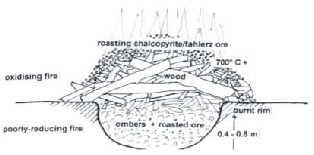
This website was made possible by a grant from the Cambrian Archaeology Association

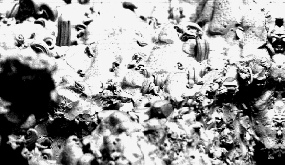
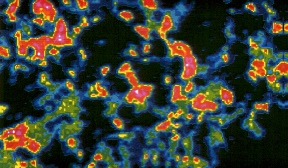
Copper Worms (sub-milimetre hairs) growing within gas
vesicle inside an experimentally produced copper
sulphide matte (courtesy P. Craddock, British Museum)
sulphide matte (courtesy P. Craddock, British Museum)
Colour-coded copper bitmap of metal in gas vesicle
(P. Craddock, British Museum)